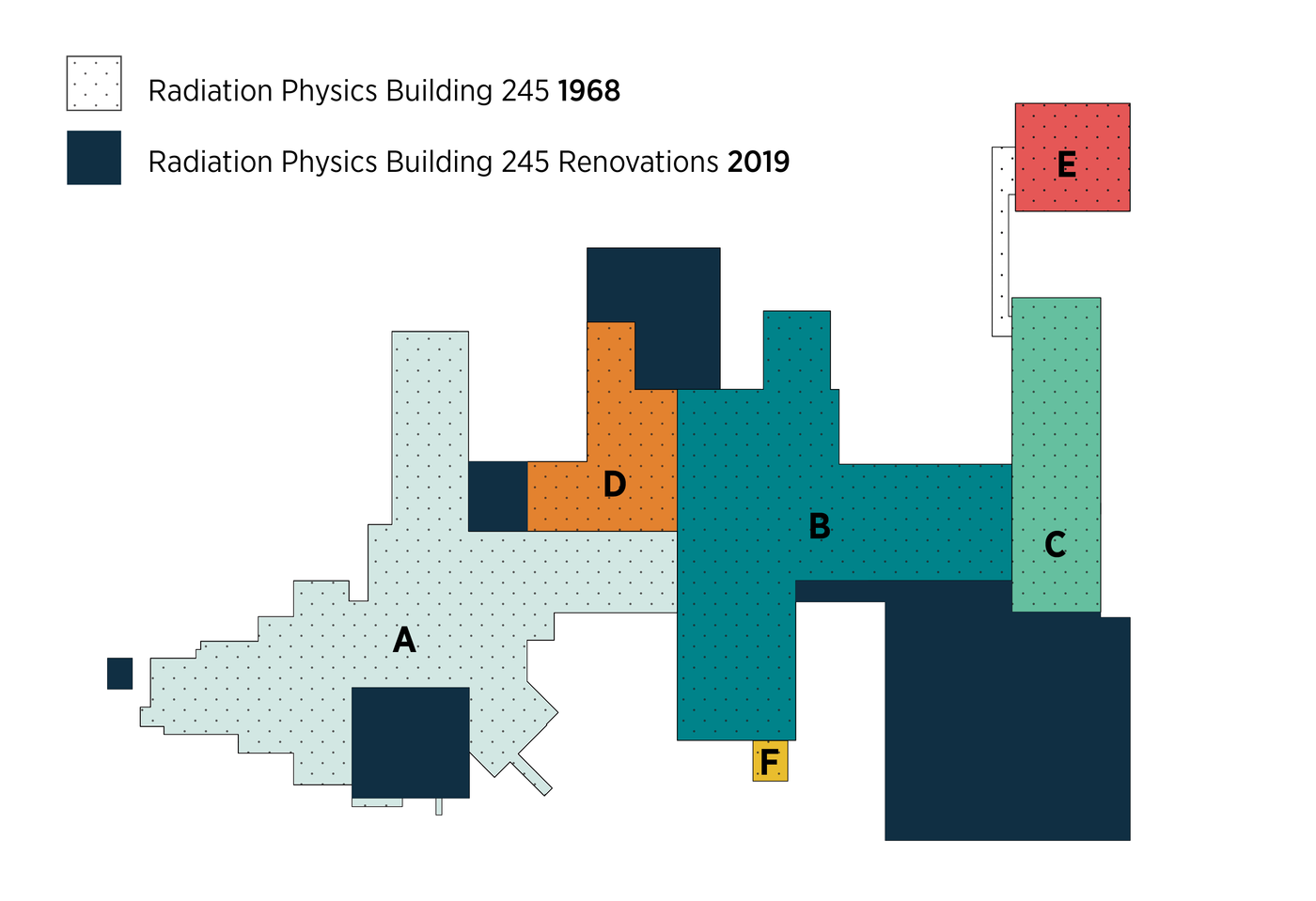Radiation Physics Building: Facilities
As originally built, the Radiation Physics Building contained about 6,500 square meters (70,000 square feet) of usable floor space divided into 70 laboratory areas occupying over 5,200 square meters (56,000 square feet) and 52 offices occupying about 1,300 square meters (about 14,000 square feet). Specially designed to meet the unique requirements of PML’s radiation programs, two-thirds of the building was constructed underground to utilize the surrounding earth as a radiation shield.
The original building consisted of four wings (A - D wings), with an addition (E wing, completed in 1967) designed to contain an isotope separator, and a second addition (F wing, completed in 1965) designed to contain a 50,000-curie cobalt-60 radiation source. The office and general-purpose laboratory wing (C wing) is a four-level structure, which includes low-level radioactivity laboratories, health physics laboratories, instrumentation laboratories and office space. The connecting wing (B wing) contains electron and X-ray experimental areas, neutron research laboratories, radioactivity laboratories and associated facilities.
The 380 MeV Synchrotron Ultraviolet Radiation Facility (SURF III), which is run by the Ultraviolet Radiation Group, and associated laboratories are contained in the D wing. The 150 MeV linear accelerator (linac), which was decommissioned in the 1980s, was almost entirely underground in the A Wing. The A Wing also contained the control room for the linac and a three-room experimental complex. The major facilities in the Radiation Physics Division are shown in the diagram below.

Image Key
A Linac Experimental Area
B Van de Graaffs & Dosimetry Labs, including the Mammographic X-Ray Facility and Manganese Bath Facility
C Offices & Radioactivity Lab
D Synchrotron
The Radiation Physics Building is a contributing resource to the NIST National Register Historic District because of its significance to the history of science and the history of architecture.

